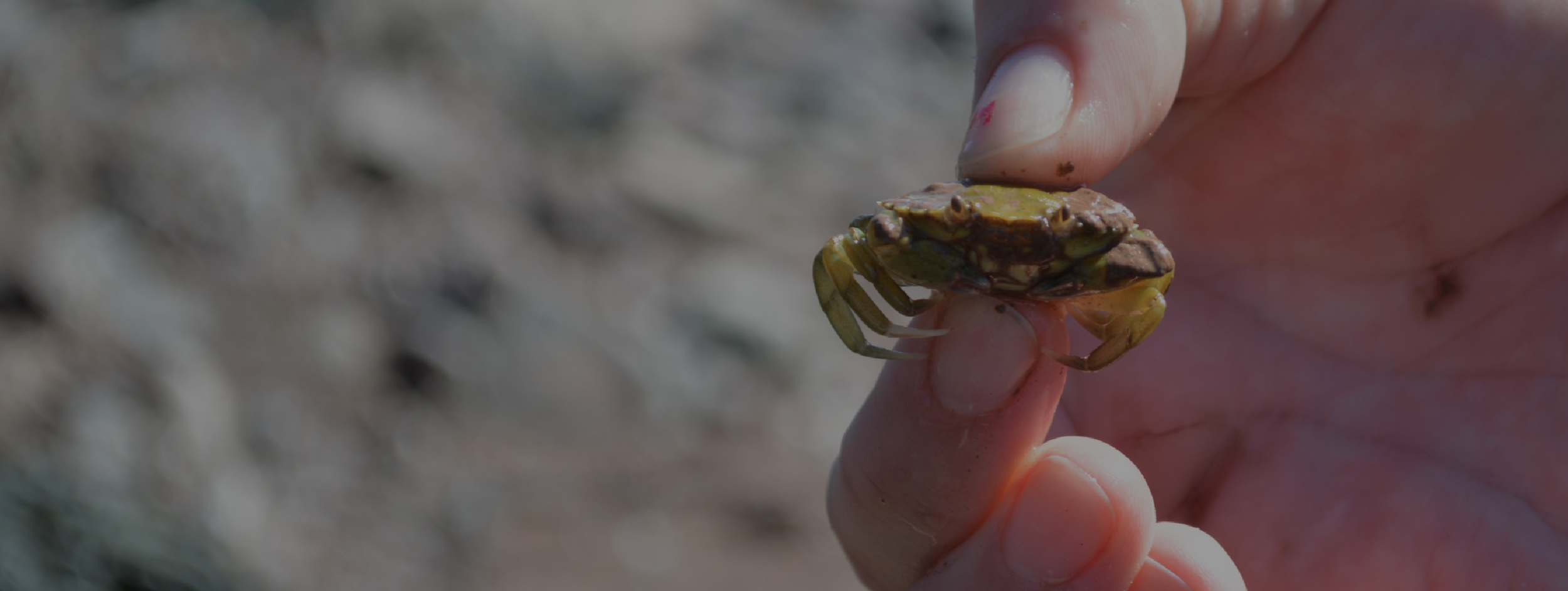
Invasive Species | Fish and Invertebrates
European Green Crab
European Green Crab
(Carcinus maenas)
French common name: Crabe vert
An aggressive non-native crab species, the European Green Crab negatively impacts marine ecosystems by outcompeting native crabs for resources and by disrupting sensitive environments like eelgrass beds, which are important habitats for many fish and mussel species.
Characteristics
Size: Adult crabs can grow up to 10 cm in size, with young crabs closer to 3-4 cm.
Shape: trapeze-shaped serrated shell with 3 spines between the eyes and 5 spines on either side of the eyes. Claws are different in size.
Coloration: European Green Crabs can vary in colour including green, yellow, and red.
Ian Manning
Key ID Features
Micheal Langveld
Top view of Green Crab with 5 spines on each side of eyes visible
Common Look-a-Likes
Atlantic Rock Crab (Cancer irroratus)
Far greater amount of spines each side of eye
Spines are less prominent
Larger potential size than European Green Crab
Ryan Hodnett
Resources:
DFO: https://www.dfo-mpo.gc.ca/species-especes/profiles-profils/europeangreencrab-crabevert-eng.html
Nature Conservancy of Canada (NCC) profile: https://www.natureconservancy.ca/en/what-we-do/resource-centre/invasive-species/european-green-crab.html
Sheddiac Bay Watershed Association - Green Crab report: See here
Maritimes map - DFO: See here




